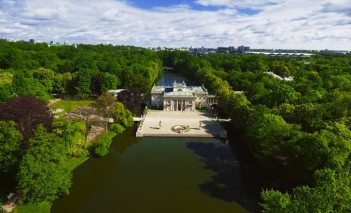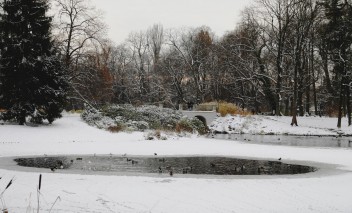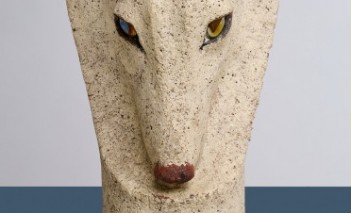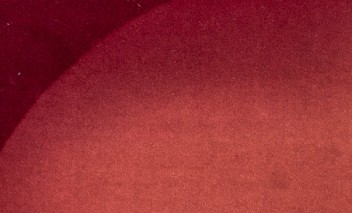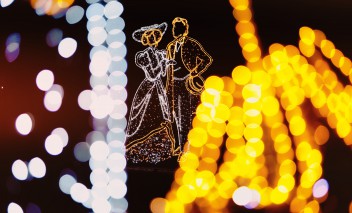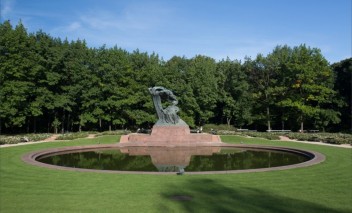The Royal Łazienki - from Local to European Brand
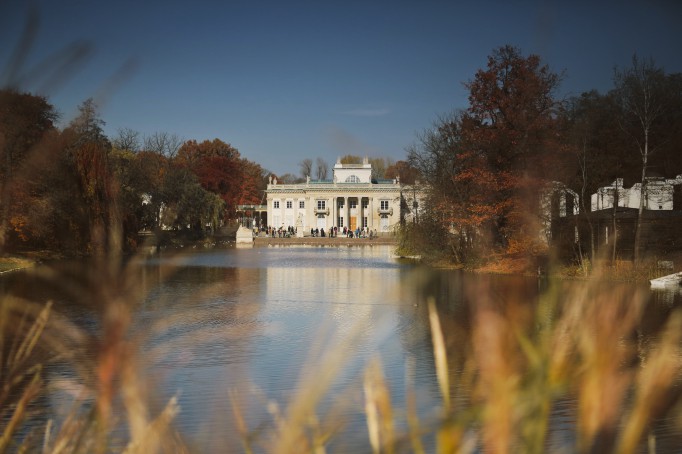
The greatest asset of the Royal Łazienki is its brand - strongly associated with positive emotions. Over the last five years, Łazienki has implemented a strategy which has ensured it multidimensional development and engaged the employees in pursuing its goals.
ThinkTank, a magazine targeted at managerial staff, published an article by the Director of the Royal Łazienki about the Museum management. Director Zielniewicz writes:
In 2010, on my first day at work on the position of Director of the Royal Łazienki, I decided to purchase several dozen deck chairs, which we placed on the grass lawns in the Museum’s park. I put on a straw hat and gave an interview conveying a key message: we invite everyone to rest on the deck chairs on the grass in the park. Lifting the ban on walking on the grass made a splash in the press - in a period of one month the press wrote 400 times about it. For an institution such as the Royal Łazienki - a strong brand of national culture and a site perceived as both inaccessible and exclusive - one could hardly imagine a better message addressed to the public. By its means I wanted to show that it is our goal to make the Royal Łazienki more accessible to visitors. This is how the metamorphosis of the Museum began.
Building the new strategy
Changing the status quo, rejecting the old and conventional practices and the organizational stagnation couldn’t have been possible without a good strategic plan. It was developed in several stages. The first consisted in a few-day long off-site sessions during which we attempted - with the help of a professional coach - to answer a number of fundamental questions - Who are we? Who do we want to become? How are we perceived by our environment? Drawing on these experiences we began to work on the document. We were assisted by a management guru and member of the Museum’s Council - Krzysztof Obłój. Together with the Professor, his assistants and students, we set the objective of developing a strategy that would make of the Royal Łazienki a modern and open institution addressing visitors and capable of looking at itself from an outside perspective. We set ourselves a long-term goal - “we want our Museum to best reflect the ideas of Enlightenment and serve as a venue of high culture and public discourse”; we adopted a mission aimed at “spreading knowledge about the era of Stanisław August and the Royal Collection, and demonstrating the great value of the gardens and the monuments”.
The second pillar of the long-term strategy was to conceive five interrelated lines of development serving as a framework for the elaboration of functional programmes. Firstly, we wanted to spread knowledge and improve the quality of service for visitors. The offer had to be attractive and easily accessible. Secondly, we strived to develop the Royal Collections displayed in the Museum. They form a great repository of national heritage. The third goal was to strengthen our identity by expanding research activities, producing publications and building a community around the Museum. The Royal Łazienki is an icon of the Enlightenment and we wanted to present it as such both domestically and internationally. The fourth goal was to enhance the organisational efficiency - perfecting what we do, and how we do it, in order to become one of the best managed museum institutions in Poland. This is also a matter of staff development. Finally, the last objective, however not less important, is good financial management. Cultural institutions receive limited public funding and thus need to raise funds from patrons, sponsors, ticket sales, event organisation, and particularly from EU. This is what we decided to concentrate on.
The strategy depends on the people
The strategic goals that we set were ambitious. In retrospect, it seems to me that they could have been successfully achieved thanks to the following factors:
1 Relying on an experienced team
Like my grandmother used to say - “whatever you have to do, do it with the people as they are. If you think that you need different people, abandon the task because there are simply no such people”. While introducing changes to the Royal Łazienki I knew that I had to do it with the existing staff. These are people who have excellent knowledge of how the Royal Łazienki operates. They love this place. The biggest managerial challenge is to be able to climb higher with the people as they are. A strategy can be successfully implemented if internal communication is good and if we clearly know the direction in which we are heading, so that each employee knows how their actions and the actions of their subordinates contribute to the achievement of the objectives. We prepared an organization strategy map in order to pursue sustainable growth and fulfil our mission. The exhibition of photographs entitled "The People of the Royal Łazienki” which we showed in the Outdoor Gallery by Aleje Ujazdowskie Avenue near the Belweder Palace has helped create a sense of community among the Museum staff. It featured portraits of employees: gardeners, security guards and visitors’ assistants. It was a way of saying that there would not be Royal Łazienki without them, and expressing our respect for their work. By slightly reducing employment we were able to raise the lowest wages by about 50%.
2 Decentralized management
The Royal Łazienki has a decentralized management system. The key role is played by department heads, who have gained a higher degree of independence. They have a right to success and mistakes and they develop their skills as part of the Museum Management Academy. The introduction of task budgets and individual budgets in each department was an important step. The department heads and specialists have become a catalyst for positive changes, which allowed us to put an end to the previously prevailing stagnation and to develop new perspectives.
3 The power of symbols
Inviting visitors to the Royal Łazienki to rest on the lawns was a symbolic gesture for the creation of the “Museum community”. The next step was to encourage jogging in the gardens. Together with the Polish Olympic Committee we designed a five kilometre running trail dedicated to the Olympic athlete Janusz Kusociński. Today, visitors cannot imagine a ban on jogging in the Royal Łazienki. My commitment to remove all the asphalt covering the park paths within 5 years was a symbol of change in the historic gardens. The asphalt covered almost 4 hectares of the garden - 9 kilometres of paths. We accomplished the task; today, we are strolling on alleys made of gravel or smooth stone bricks. In addition to that, there has been a number of other actions as a result of which the Royal Łazienki regained its royal and historical character. The Museum has become open for people from all social groups. Free admission to all Museum buildings in November of every year has been a remarkable solution. In 2015, we expected over 50,000 visitors.
4 Effective acquisition of external funding
New programme tasks and the building and Royal Collection revitalisation plan required larger sources of funding. Between 2010 and 2015 the Museum’s budget was increased by more than twice and reached PLN 55 million thanks to EU funds, special-purpose subsidies of the minister, the fund for environmental protection, and support from the Club of Patrons. Similarly to other cultural institutions the Royal Łazienki used the European funds very well. In our case it meant an increase of EU funding from PLN 4 million in 2010 to PLN 34 million in 2015. It has allowed us to complete a full revitalization programme of over PLN 130 million since 2010. The Club of Patrons of the Museum received a prize from the Minister of Culture and National Heritage.
Positive emotions surrounding the Royal Łazienki
The greatest asset of the Royal Łazienki is its ‘emotional brand’. People love the place. In a survey conducted by the TVN television station in 2010, the Royal Łazienki was voted as the happiest place in Warsaw. Alongside the grand history, the Royal Łazienki has also its intimate stories: squirrels and peacocks, first kisses of lovers and walks of a grandmother with her grandson. We are also present in literature and poetry. I am happy that over the last five years we have managed to achieve so much in the Royal Łazienki with our team. I hope that the reputation and energy of the happiest place in Warsaw will radiate as far as possible.
Tadeusz Zielniewicz, art historian and conservator of monuments, since 2010 the Director of the Royal Łazienki in Warsaw.
